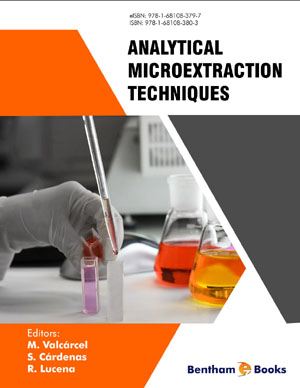Abstract
Various membrane-based extraction techniques are used in analytical chemistry mainly for pretreatment before analyte determination using chromatographic or other techniques. Membrane extraction can also be applied for the extraction of various metal ions and is then followed by atomic absorption or similar detection techniques. They allow high selectively for a number of analytes from chemically more or less complex samples and high concentration enrichment, easily thousands of times. Currently, the most common format for membrane extraction utilizes hollow-fiber membranes, which permit easy and versatile operation with a minimum of cost. A number of applications have been presented involving determination of polar and medium-polar compounds as acids and bases in samples of environmental and biological origin, usually in combination with liquid chromatography and mass spectrometry. For other analytes in which membrane extractions are various metal ions, the membrane extraction is followed by techniques like atomic absorption and similar. Also applications to non-polar compounds in mainly environmental samples, followed by gas chromatography, are described in the literature.
In this chapter, the basic theoretical principles for the common variants of membrane extraction are described. Guidelines for the selection of operational parameters as well as concrete advice for the practical implementation are provided.
Keywords: Biomedical samples, Chromatography, Determination of acids, Determination of bases, Enrichment, Environmental samples, Extraction, Food samples, Hollow fibers, Mass spectrometry, Membrane extraction, Sample preparation, Selectivity, Supported liquid membrane (SLM).






















